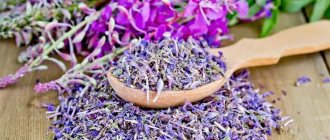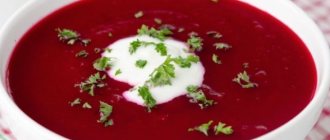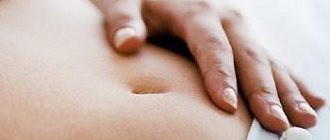Types of marshmallows
This confectionery product comes in different variations. Based on the type of gelatinous base, the custard and adhesive types are distinguished. In the first case, the basis of the product is marmalade mass. And in the second - pectin, agaroid, agar. Custard is heavier, and glue is more airy. Each of these types can be produced using different technologies, so they will differ in appearance:
- The molded treat is made by squeezing spherical marshmallow halves with a corrugated surface through serrated tips.
- A dense dessert or fig is made from fruit and berry puree, which is boiled, stretched and rolled into thin rolls.
- Roll pastille is made from oblong loaves, which are formed from layers rolled into a spiral.
- The airy or loose version is applesauce, which is whipped into foam, baked, dried and cut into layers.
- The carved sweet is made from a cooled pastille layer, which is cut into square or rectangular bars.
But there is another way to differentiate these products. In addition to the cooking method, this delicacy can vary in the ingredients used. There can be many combinations. So, marshmallows come not only in different shapes, but also in different colors. It is divided into types depending on what components were used in its manufacture. Most often you can find options such as:
- plum;
- honey;
- cherry;
- rowan;
- apple;
- apricot;
- raspberry;
- fruit and berry.
Just by the name it is not difficult to understand what exactly the product consists of. There are no preservatives or dyes in it, so the question does not arise: can a nursing mother have marshmallows in the first month of feeding. Such products are considered harmless and contain few calories. It will not harm your health or spoil your figure, since it includes exclusively beneficial microelements and vitamins.
Composition of the product
This is an original Russian product, which was originally completely natural. This property has remained in him to this day. Standard marshmallow consists of honey and whipped fruit and berry puree. The main condition is increased acidity of the fruit. For this reason, green apples and Antonovka are usually used. Cranberries and currants are often added to them. If sweet fruits are used, then during preparation the mass is diluted with citric acid. Sometimes pectin and agar-agar are added to the products to give them a jelly-like form. These substances heal the body and fill it with energy, but there is also a flip side to the coin.
The benefits and harms of marshmallows
Since the sweetness consists only of natural elements, it is rich in vitamins and beneficial elements. The plant fibers included in the composition cleanse the body of toxins and waste. Light carbohydrates improve mood and tone. Vitamins of groups B2, PP and C have a beneficial effect on the immune system and nerve cells. Mineral compounds stabilize the functioning of the heart, improve the process of hematopoiesis and strengthen bones. Fruit fiber improves digestion and normalizes intestinal motility.
Despite all the advantages, there are also disadvantages of this product. The delicacy is contraindicated for people with individual intolerance to its ingredients. Due to the large amount of sugar, this product should not be consumed by diabetics and those who are overweight or obese. When consuming this sweetness in large quantities, there is a risk of developing tooth decay, increasing blood glucose levels and causing digestive upset. To prevent this, young mothers should be more careful when taking this product.
Marshmallows and marshmallows - dietary treats for a nursing mother
Contrary to popular belief that sweets are indulgence and there is no benefit from them, but only harm to teeth and figure, nutritionists advise nursing mothers to consume marshmallows and marshmallows. The natural ingredients they contain - fruit and berry puree, sugar, protein, pectin, agar-agar or gelatin - make marshmallows and marshmallows very useful products in the diet of a woman who is breastfeeding. And despite the fact that these sweets are very rich in carbohydrates, marshmallows and marshmallows can be called low-calorie products, since they contain virtually no fat, and proteins make up only 1% of the total composition of the product.
Read about what other sweets a nursing mother can enjoy in the article - Sweets while breastfeeding: you can, but be careful.
Pastila is an original Russian delicacy. Our ancestors prepared it from fruit and berry puree (usually apples) with the addition of honey. The mixture was boiled, spread on linen bases, and then dried in an oven. Much later, French confectioners used this recipe. Only in dessert they added whipped egg whites, replaced honey with sugar, and the resulting product, because of its tenderness and airiness, was called marshmallow (in honor of the ancient Greek god of the wind).
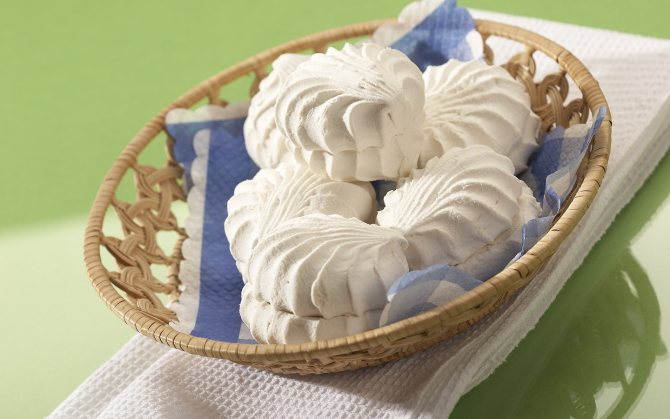
As a basis for marshmallows, French confectioners took the recipe for marshmallow, an original Russian delicacy.
Today, manufacturers add a form-building component (thickener) to marshmallows and marshmallows: gelatin, pectin or agar-agar. And if gelatin is a substance of animal origin (it is obtained from ground cartilage and bone tissue), then pectin and agar-agar are plant components. Pectin is produced from citrus fruits, apple pomace, sugar beet pulp, sea grass or sunflower heads. Agar-agar is obtained by extracting plant gelatin from red and brown algae. Also, modern delicacies allow the presence of berry syrups, milk, food acids, dyes and flavors in their composition.
The process of preparing marshmallows in Rus' was very labor-intensive. To obtain the desired consistency of fruit puree, it took more than one day of continuous whisking. Therefore, this dessert cost 2 times more than chicken meat and 15 times more than bread.
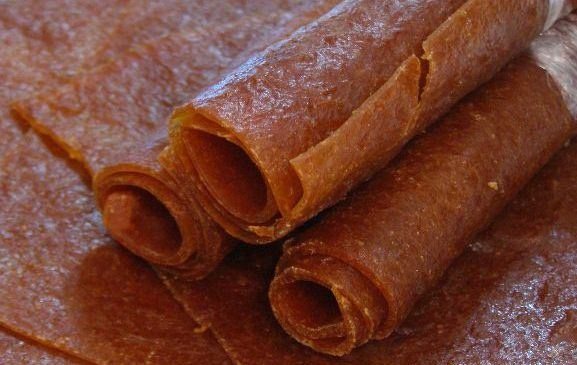
The presence of a thickener in the pastille allows, after drying, to give this sweet a roll shape
Useful and harmful properties of sweets
The main feature of these culinary products is that they contain only proteins and carbohydrates, which are easily absorbed by the body. The presence of fat is minimal - about 0.1 g per 100 g of product. There are practically no vitamins in marshmallows and marshmallows, since they are destroyed during the preparation of desserts, but these sweets can boast a high content of macro- and microelements, which make them incredibly useful for humans:
- Pectin, which is part of fruits, is a natural antioxidant - it helps the body get rid of toxins, heavy metal salts, and resist infections. This substance also prevents cholesterol from accumulating on the walls of blood vessels.
- Although the vitamins contained in the fruit base are destroyed during heat treatment, riboflavin (B2) and niacin (PP) remain in marshmallows and marshmallows. Vitamin B2 is needed by the body to produce red blood cells and some hormones; it also strengthens vision and the nervous system: it is easier for the body to cope with stress, which is very important for a nursing mother with her intense rhythm of life. Nicotinic acid improves the structure of skin, hair and nails, accelerates metabolism and prevents inflammatory processes.
- Marshmallows and marshmallows are rich in useful microelements - iron, phosphorus, calcium and iodine, which are necessary for normal metabolism in the body. Iron prevents anemia, phosphorus maintains the integrity of tooth enamel, calcium is necessary for bone tissue, and iodine helps the thyroid gland. Especially a lot of iodine is contained in products with agar-agar.
- Due to their high glucose content, sweets have a beneficial effect on human brain activity. Therefore, marshmallows and marshmallows in moderate doses are recommended by nutritionists not only for nursing mothers and pregnant women, but also for children over 3 years old.
- Plant fibers in fruit desserts are useful for the functioning of the digestive system and normalization of stool. If these products contain agar-agar, they will have a mild laxative effect on the body. In addition, vegetable gelatin removes toxins and waste, but does not wash away minerals.
- Moderate consumption of marshmallows and marshmallows does not affect weight, since these sweets are low-calorie. For comparison: 100 g of dark chocolate contains approximately 540 kcal, 100 g of kozinaki - 420 kcal, and the same amount of marshmallow - 326 kcal. The calorie content in marshmallows is even lower - 324 kcal. For nursing mothers, this fact is very important, since they often worry about excess weight after childbirth.
Video: marshmallows and marshmallows - sweets for health
Despite all the advantages of marshmallows and marshmallows, if the consumption limit is exceeded, these delicacies can cause harm:
- A high sugar content in dessert can provoke: violation of the integrity of tooth enamel, and, as a result, the development of caries; weight gain due to uncontrolled consumption of the product; exacerbation of thrush, because after childbirth a woman’s genital area is especially vulnerable.
- Marshmallows and marshmallows are contraindicated if the nursing mother has diabetes. Excess glucose in sweets can cause high blood sugar. In this case, a fructose-based dessert is recommended.
- Due to the large amount of carbohydrates, these products are not recommended for people with carbohydrate metabolism disorders.
- Food colors and flavors contained in sweets, as well as egg whites, can cause an allergic reaction in mother and child.
Nutritionists and doctors recommend eating sweets between 4 and 6 p.m. It is during this period that the level of glucose in the blood decreases in the body.
Features of taking marshmallows while breastfeeding
Lactating women are recommended to eat this delicacy only on a hypoallergenic basis. However, it is not advisable to choose products containing egg whites and honey. They can cause an allergic reaction in the child. It is better to buy apple marshmallow with sugar. The harm in it is minimal, the chances of getting an allergy are reduced. You should also study in detail the composition indicated on the label. Products should not contain flavorings or chemical additives. They will negatively affect the health of both the baby and the mother.
Effect on lactation
This dessert will be safe in moderate dosage. If marshmallows are used in small quantities during breastfeeding, there will be no negative consequences. The main thing is to choose the most harmless option during lactation (white or cream color without additives). Such treats contain phosphorus, iron, calcium, magnesium, nicotinic and ascorbic acid. They improve the epidermis, prevent anemia, improve vision and increase brain activity. All beneficial properties are activated if you do not abuse sweetness.
How much marshmallows can you eat?
This product will be useful when eaten according to the rules. Doctors advise consuming a maximum of 50 grams per day (2-3 pieces). Nursing mothers are allowed to indulge in this dessert a maximum of two times a week. In this case, you do not need to wash down the marshmallow with a sweet drink or eat it on an empty stomach. Otherwise, thrush or indigestion will occur. The age of the baby should also be taken into account.
When breastfeeding a newborn, you should avoid such sweets.
When can you start eating marshmallows?
It is permissible to include it in the diet when the child is two to three months old. First, you should consume a small amount of the product (one piece) in the first half of the day to see how your baby reacts. If colic occurs, it is better to give up sweets until the child is six months old. If his health does not deteriorate within two days, he is allowed to consume up to three pieces per day. It is possible to indulge in such a delicacy a couple of times a week, but you should choose it correctly.
How to choose the right marshmallows for a nursing mother
The ideal marshmallow option for a nursing mother is a product prepared at home and consisting only of protein and applesauce. However, when a woman is constantly busy with household chores and caring for the baby, she most often buys this product in a store. What should you pay attention to when choosing quality marshmallows?
- First of all, look at the standard at which the product was manufactured. Choose marshmallows produced in accordance with GOST, or at least in accordance with STB. Confectionery products produced according to specifications may contain ingredients that are not the most beneficial, and sometimes even downright harmful.
- Carefully read the composition of the product: the fewer chemical components it contains, the better. Give preference to marshmallows made exclusively from natural substances.
- The color of the marshmallow is also of great importance: it should be white or cream. The confectionery product can be pink, yellow or even blue, but then you must clearly understand that the product contains dyes. And they are not always natural. And this is fraught with the development of allergic reactions in mother and child.
- High-quality chocolate marshmallows have a glossy surface and shine in the light from all sides. Matte surface indicates that the product was not made with real chocolate, but with confectionery glaze, which may contain harmful fats and soy. In addition, chocolate is a strong allergen, so a nursing mother should consume this delicacy with caution.
- The consistency of the confectionery product should be uniform, without cracks or chapped crust. The marshmallow is soft to the touch, but quite elastic: with light pressure, after a while it returns to its original shape.
- Do not forget about the production date, expiration date and price of the product. A natural product has a short shelf life and cannot be cheap.
What kind of marshmallow can you eat?
Apple juice is considered safer. It contains no additional additives or pronounced allergens. Pediatricians allow women nursing newborns to use it. The main thing is to buy a product with a minimum of dyes and check its expiration date. Pastila during breastfeeding in the first month will be harmless if its composition contains only natural ingredients and it was made recently. Its color also matters. During lactation, a cream and white delicacy is suitable. It is better not to take sweets in bright colors, as they contain dyes and flavors that can harm the baby.
Belyovskaya marshmallow
Belevskaya marshmallow is a type of traditional Russian marshmallow, which has been produced for centuries in the city of Belyov, Tula region. This dessert is prepared exclusively from Antonov apples, especially rich in pectin, molasses and egg whites. The marshmallow thickens well and remains dense after baking. Externally, the delicacy resembles a layer cake. This product contains no preservatives at all, so the product has a short shelf life and a fairly high price. And, of course, Belyovskaya marshmallow can be recommended for women during breastfeeding.
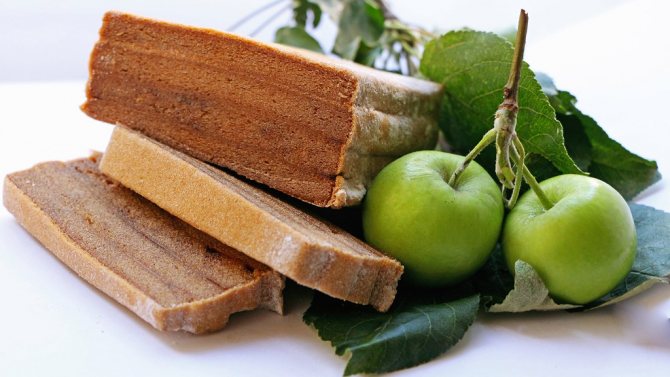
Belyovskaya marshmallow contains only natural ingredients: applesauce, molasses and egg whites.
The beginning of the production of Belyov marshmallow is associated with the name of the merchant Ambrosy Prokhorov, who planted a large orchard in 1858, and in 1888 began producing marshmallow.
Risks for the child
Sweet foods eaten by the mother can ruin the health of the baby. Reactions to such a product vary, ranging from indigestion to allergies. For this reason, sweets should be consumed in moderation. The norm for marshmallows is 50 grams per day and 100 grams per week. If these limits are exceeded, the health of the newborn will deteriorate. The first symptoms will be:
- skin itching;
- increased gas formation;
- the appearance of a rash;
- lacrimation;
- diaper rash;
- cough;
- peeling of the skin;
- spots;
- colic;
- caries.
The baby may suffer from insomnia, become moody and irritable. This indicates intolerance to the treat. In this case, you should stop taking marshmallows until the child is six months old. However, there is an alternative. If mom feels the need for sweets, then you can prepare it yourself. To do this, you will need to pour 6 grams of agar with water and leave to swell. 6 apples are cut in half and the core is removed. Then the mass is baked, cooled, and the pulp is separated from the skin. Beat everything with a blender, add 1 glass of sugar. The apple mixture with sugar is heated until all the sugar has dissolved. After this, the resulting puree is mixed with agar and poured into molds. Once everything has cooled down, place the mixture in the refrigerator overnight. In the morning, sprinkle with powdered sugar and cut. The homemade product will not contain preservatives or dyes, so it will not cause any harm to the baby.
It is permissible to include marshmallows in the diet of a nursing woman, but within limited limits. You shouldn't eat this product every day. Otherwise, mom and baby will have health problems. The permissible dosage is a maximum of 6 pieces of treat per week. At the same time, you should choose products with natural ingredients and a hypoallergenic base. To pamper yourself with such sweetness, preference should be given to apple marshmallow or milky products. In small quantities, this dessert not only will not harm, but will also improve the well-being of the woman and her child.
Sweets during lactation: when and how to consume them
Of course, a nursing mother can occasionally treat herself to aromatic marshmallows or marshmallows. However, the product must be natural and of high quality. Of course, you can find good marshmallows in the store, but it is better if it is made with your own hands and from the ingredients that you choose yourself. Only in this case will the likelihood of allergic reactions in mother and baby be minimal.
In the first months after childbirth, it is better not to experiment with new products, including sweets. You need to wait a little until the baby’s gastrointestinal tract gets stronger.
It is recommended to include a sweet dessert in a nursing mother’s diet no earlier than the third month of the baby’s life, following all the rules for introducing new products: first, the woman eats a small piece (about half of one marshmallow or the same amount of marshmallow) and observes the baby’s reaction for two days. The mother should be alert to symptoms such as rash and redness on the baby’s skin, colic, lethargy, and poor sleep. If you detect at least one of these signs of a malfunction in the child’s body, you should immediately exclude marshmallows and marshmallows from the mother’s diet. If everything is fine with the child - he is calm, eats well and there are no allergic reactions, then in the future you can increase the portion to 2-3 pieces per week.

One of the signs of an allergy to the product is diathesis on the baby’s cheeks
In addition, there is no need to try other products at the same time as marshmallows and marshmallows: then it will be difficult to understand what exactly is causing the diathesis or digestive problems in the child.
Remember that too much sugar in marshmallows and marshmallows can change the taste of breast milk. And in addition to unusual taste sensations, the baby will also receive an excessive load on his body.




